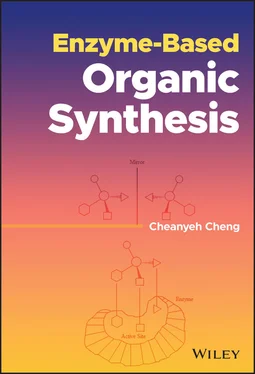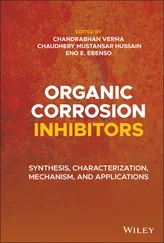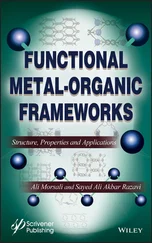Cheanyeh Cheng - Enzyme-Based Organic Synthesis
Здесь есть возможность читать онлайн «Cheanyeh Cheng - Enzyme-Based Organic Synthesis» — ознакомительный отрывок электронной книги совершенно бесплатно, а после прочтения отрывка купить полную версию. В некоторых случаях можно слушать аудио, скачать через торрент в формате fb2 и присутствует краткое содержание. Жанр: unrecognised, на английском языке. Описание произведения, (предисловие) а так же отзывы посетителей доступны на портале библиотеки ЛибКат.
- Название:Enzyme-Based Organic Synthesis
- Автор:
- Жанр:
- Год:неизвестен
- ISBN:нет данных
- Рейтинг книги:3 / 5. Голосов: 1
-
Избранное:Добавить в избранное
- Отзывы:
-
Ваша оценка:
- 60
- 1
- 2
- 3
- 4
- 5
Enzyme-Based Organic Synthesis: краткое содержание, описание и аннотация
Предлагаем к чтению аннотацию, описание, краткое содержание или предисловие (зависит от того, что написал сам автор книги «Enzyme-Based Organic Synthesis»). Если вы не нашли необходимую информацию о книге — напишите в комментариях, мы постараемся отыскать её.
An insightful exploration of an increasingly popular technique in organic chemistry Enzyme-Based Organic Synthesis
Enzyme-Based Organic Synthesis
Enzyme-Based Organic Synthesis
Enzyme-Based Organic Synthesis — читать онлайн ознакомительный отрывок
Ниже представлен текст книги, разбитый по страницам. Система сохранения места последней прочитанной страницы, позволяет с удобством читать онлайн бесплатно книгу «Enzyme-Based Organic Synthesis», без необходимости каждый раз заново искать на чём Вы остановились. Поставьте закладку, и сможете в любой момент перейти на страницу, на которой закончили чтение.
Интервал:
Закладка:
Table of Contents
1 Cover
2 Title Page
3 Copyright Page
4 Preface
5 Acknowledgements
6 1 Introduction1.1 Discovery and Nature of Enzyme 1.2 Enzyme Structure and Catalytic Function 1.3 Cofactors and Coenzymes 1.4 Molecular Recognition and Enzyme Specificity 1.5 Enzyme Classes and Nomenclature 1.6 Enzyme and Green Chemistry 1.8 The Winner of Year 2009: A Solvent‐Free Biocatalytic Process for Cosmetic and Personal Care Ingredients References
7 2 Organic Synthesis with Oxidoreductases2.1 Oxidation Reactions 2.2 Reduction Reactions References
8 3 Organic Synthesis with Transferases3.1 Transamination with Aminotransferases 3.2 Glycosyl‐transfer with glycosyltransferase 3.3 Phosphorylation with Kinases 3.4 Acetyl Group Transfer with Acetyltransferase References
9 4 Organic Synthesis with Hydrolases4.1 Hydrolysis of Ester Bond 4.2 Hydrolysis of Amide Bond 4.3 Hydrolysis of Phosphate Esters 4.4 Hydrolysis of Epoxides 4.5 Hydrolysis of Hydantoins 4.6 Hydrolysis of Glycosidic Bonds and Natural Polysaccharide References
10 5 Organic Synthesis with Lyases 5.1 Lyases with Carbon–Carbon Bonds 5.2 Lyases with Carbon–Oxygen Bonds 5.3 Lyases with Carbon–Nitrogen Bonds 5.4 Lyases with Carbon–Sulfur Bonds 5.5 Lyases with Carbon–Halide Bonds References
11 6 Organic Synthesis with Isomerases 6.1 Racemases and Epimerases 6.2 Cis‐Trans Isomerase 6.3 Intramolecular Oxidoreductases 6.4 Intramolecular Transferases 6.5 Intramolecular Lyases References
12 7 Organic Synthesis with Ligases 7.1 Ligases for Carbon–Oxygen Bonds Formation 7.2 Ligases for Carbon–Sulfur Bonds Formation 7.3 Ligases for Carbon–Nitrogen Bonds Formation 7.4 Ligases for Carbon–Carbon Bonds Formation References
13 8 Future Perspectives8.1 Combinatorial Enzymatic Organic Synthesis 8.2 Artificial Intelligence Assisted Enzymatic Organic Synthesis References
14 Index
15 End User License Agreement
List of Tables
1 Chapter 1 Table 1.1 Turnover numbers for some enzymes. Table 1.2 Some inorganic metal ions as cofactor of enzymes. Table 1.3 Some coenzymes as transient carriers of specific atoms or functio... Table 1.4 Six major classes of enzyme. Table 1.5 Twelve principles of green chemistry.
List of Illustrations
1 Chapter 1 Scheme 1.1 The primary structure of a polypeptide chain linked by the peptid... Scheme 1.2 The proposed enzyme reaction mechanism by Michaelis and Menten. Scheme 1.3 A generalized enzyme‐catalyzed reaction. Figure 1.1 The number of binding sites of a substrate with enzyme determines... Figure 1.2 Three‐point attachment rule shows that only one enantiomer of the... Figure 1.3 The stereospecificity of enzyme for two substrate enantiomers by ... Scheme 1.4 Enantioselective synthesis of (3 aS ,6 aR )‐lactone. Scheme 1.5 The enantioselective conversion of HPMAE to ( S )‐phenylephrine.... Scheme 1.6 Regio‐ and stereoselective concurrent oxidations of racemic vicin...
2 Chapter 2 Scheme 2.1 Oxidation of benzyl alcohol using an oxidase and a catalase. Scheme 2.2 Oxidation of benzyl alcohol via alcohol dehydrogenases or microbi... Scheme 2.3 Regio‐ and stereoselective concurrent oxidations of (±)‐1,2 diols... Scheme 2.4 Deracemization of racemic 1‐phenyl‐1,2‐ethanediol by C. parapsilo ... Scheme 2.5 Biocatalytic racemization of sec ‐alcohols and acyloins using lyop... Scheme 2.6 Oxidation of an alcohol intermediate to the precursor of atranori... Scheme 2.7 Bioconversion of isoeugenol to vanillin and vanillic acid by N. i ... Figure 2.1 Hydroxylation of alkanes by cytochrome P450 monooxygenase (CYP).... Scheme 2.8 Terminal hydroxylation of long‐chain alkanes by LadA. Scheme 2.9 Hydroxylation of alkanes by fungal peroxygenase. Scheme 2.10 The catalytic hydroxylation of L‐phenylalanine and L-tyrosine by... Scheme 2.11 Hydroxylation of naringenin in the culture of the recombinant S. ... Scheme 2.12 Hydroxylation of isoliquiritigenin in human liver by cytochrome ... Scheme 2.13 Hydroxylation of d ‐amphetamine by cytochrome P450 to give p ‐hydr... Scheme 2.14 Catabolic pathways of monosubstituted benzene to diol via cis ‐di... Scheme 2.15 Chemoenzymatic preparation of pancratistatin analogs. Scheme 2.16 Whole‐cell fermentation of methyl 2‐iodobenzoate for organic syn... Scheme 2.17 Toluene dioxygenase catalyzed cis ‐dihydroxylation of phenols tow... Scheme 2.18 Naphthalene dioxygenase catalyzed cis ‐dihydroxylation of naphtha... Scheme 2.19 Regioselective oxidation of biphenyl by the Rhodococcus sp. DK17... Scheme 2.20 Postulated reaction mechanism for the formation of thymol from p Scheme 2.21 The epoxidation reaction catalyzed by squalene epoxidase (SE). Scheme 2.22 The synthesis of enantiopure 2‐amino‐1‐phenyl and 2‐amino‐2‐phen... Scheme 2.23 Epoxidation of ally phenyl ether for producing chiral phenyl gly... Scheme 2.24 Stereoselective epoxidation of unsaturated bicyclic γ‐lactones.... Scheme 2.25 Synthesis of optically pure S ‐sulfoxide by co‐expressed E. coli .... Scheme 2.26 The multiple enzyme biosynthesis of ω‐hydroxyundec‐9‐enoic acid ... Scheme 2.27 The Baeyer–Villiger oxidation of cyclohexanone to ε‐caprolactone... Scheme 2.28 Enantiopure asymmetric microbial Baeyer–Villiger oxidation of ra... Scheme 2.29 Enantioselective 2‐hydroperoxylation of saturated and unsaturate... Scheme 2.30 Peroxidation of linoleic acid with soybean lipoxygenase and subs... Scheme 2.31 Mn‐LO mediated peroxidation of linoleic acid. Scheme 2.32 Kinetic resolution of aryl hydroperoxides by HRP. Scheme 2.33 Enantioselectivities of the selenosubtilisin‐catalyzed kinetic r... Scheme 2.34 Asymmetric reduction of ketone precursor o ‐chloroacetophenone wi... Figure 2.2 Structure of aprepitant. Scheme 2.35 The asymmetric synthesis of 3,5‐bis(trifluoromethyl) acetophenon... Scheme 2.36 Bioreduction of α‐haloketones in aqueous medium using different ... Scheme 2.37 E. coli or S. cerevisiae catalyzed reduction of bicycle[2.2.2]oc... Scheme 2.38 Yeast mediated enantioselective reduction of ethyl benzoylacetat... Scheme 2.39 Asymmetric reduction of ketones and polymerization of the optica... Scheme 2.40 Asymmetric reduction of activated alkene substrates catalyzed by... Scheme 2.41 Asymmetric reduction of α‐methylmaleic acid dimethylester with Z ... Scheme 2.42 Asymmetric bioreduction of citraconic acid dimethylester via a c... Scheme 2.43 BY fermentations and OYEs 1–3 mediated bioreductions of substrat... Scheme 2.44 The reduction of γ,δ‐double bond of the conjugated lactone in se...
3 Chapter 3 Scheme 3.1 The transamination between acetophenone and excessive isopropyl a... Scheme 3.2 Enzyme cascade reactions for the conversion of L‐threonine to L‐h... Scheme 3.3 The formation of N ‐benzylacetamide from benzaldehyde through an e... Scheme 3.4 The enzymatic cascade route toward all four diastereomers of 4‐am... Scheme 3.5 The oxidation/transamination cascade reactions for the biosynthes... Scheme 3.6 Synthesis of sitagliptin from prositagliptin ketone using immobil... Scheme 3.7 Galactosyltransferase catalyzed glycosylation with UDP‐2‐d‐Gal as... Scheme 3.8 Method for avoiding product inhibition in GalT‐catalyzed glycosyl... Scheme 3.9 β‐1,4‐GalT catalyzed galactosylation of natural glycosides and co... Scheme 3.10 Two‐step synthesis of glycogen with glycogenin functioning as an... Scheme 3.11 The transfer of γ‐phosphoryl group from ATP to hydroxyl group co... Scheme 3.12 Phosphorylation of 4HT to 4PHT by kinase DUF1537 for enzyme cofa... Scheme 3.13 Sequential phosphorylation of peptide R‐SSD3 with casein kinases... Scheme 3.14 Synthetic pathway of melatonin from serotonin by two kinds of ac... Scheme 3.15 Protein acetylation with CRTase and DAMC without involving acety...
Читать дальшеИнтервал:
Закладка:
Похожие книги на «Enzyme-Based Organic Synthesis»
Представляем Вашему вниманию похожие книги на «Enzyme-Based Organic Synthesis» списком для выбора. Мы отобрали схожую по названию и смыслу литературу в надежде предоставить читателям больше вариантов отыскать новые, интересные, ещё непрочитанные произведения.
Обсуждение, отзывы о книге «Enzyme-Based Organic Synthesis» и просто собственные мнения читателей. Оставьте ваши комментарии, напишите, что Вы думаете о произведении, его смысле или главных героях. Укажите что конкретно понравилось, а что нет, и почему Вы так считаете.












